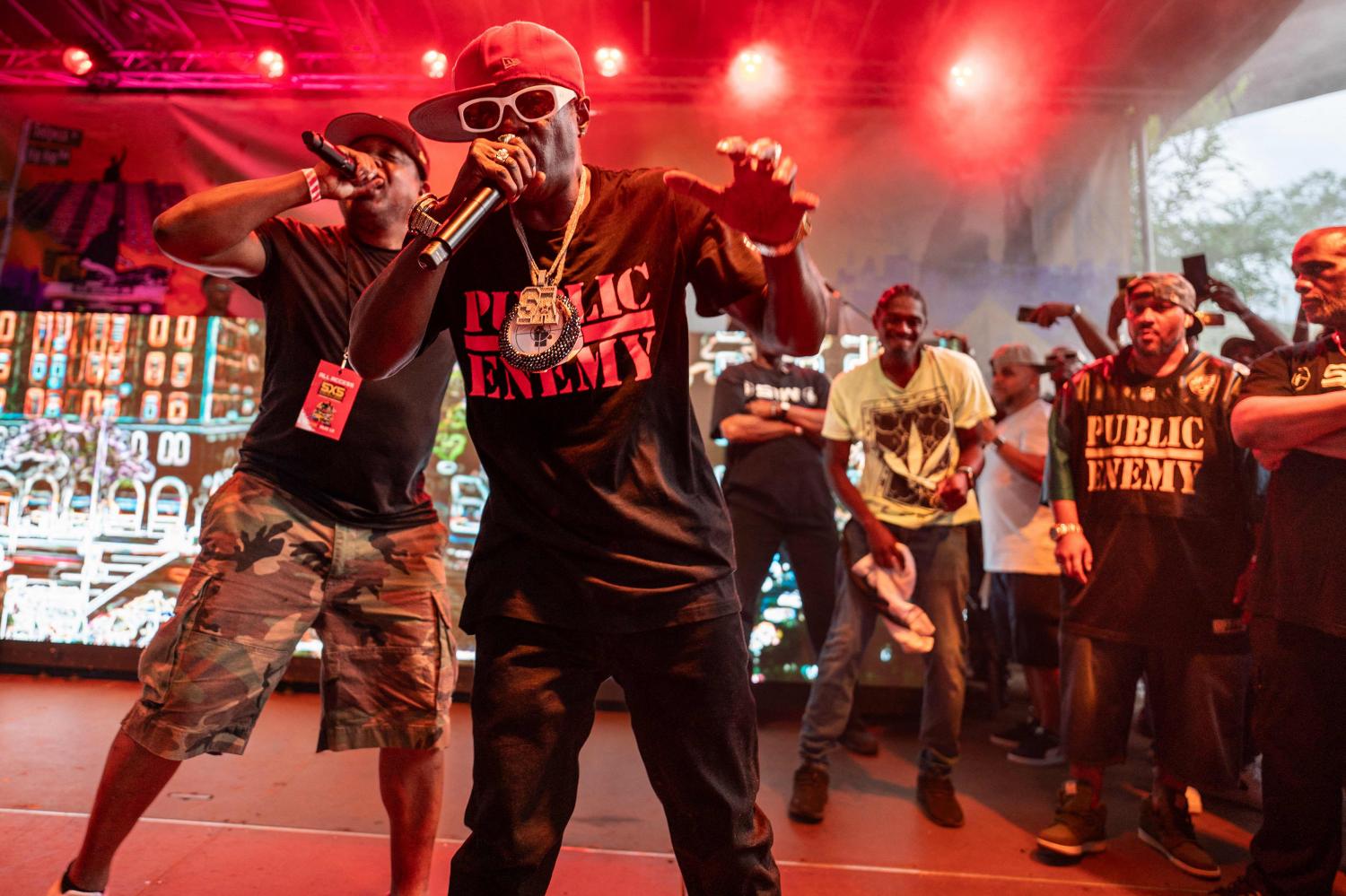On Aug 11, New York City celebrated the 50th anniversary the birth of hip-hop with exhibitions, concerts and street art across the five boroughs.

Public Enemy's Chuck-D and Flavor Flav perform during a celebration for the 50th anniversary of hip-hop, on Saturday in the Bronx borough of New York City. (Photos: DAVID DEE DELGADO)
According to the "hip-hop content hub" on the NYCtourism site, the genre, now "a global movement, traces its roots to a Bronx party at 1520 Sedgwick Avenue on Aug 11, 1973, hosted by DJ Kool Herc".
In the 70s, South Bronx already had DJs spinning vinyl from two decks, hitting "breaks" to keep kids dancing in parks and community centres, B-boy dancers trialled breakdancing and a new kind of graffiti began to fleetingly appear on trains in the city. Hip-hop culture was born.
I was living in London during the time all of this was happening in the late 70s/early 80s and word spread quickly of these new kinds of parties and DJs (and MCs as some were called), who "scratched" records (often from mum and dad's record collection -- plenty of James Brown, too, one of the most sampled musicians on the planet). I bought Grandmaster Flash and the Furious Five's single The Message (1982) and Afrika Bambaataa's Planet Rock the same year. The latter DJ was the first US hip-hop artist to tour overseas in 1982.

A breakdancer at the anniversary celebration.
Fast forward 50 years, and hip-hop is everywhere. For instance, rap is an established genre in Thailand with musicians like Joey Boy and Thaitanium. Buri Ram native Lalisa Manoban of the K-pop band Blackpink and a global star, raps in English and Korean and incorporates breakdance moves in her dancing. Hip-hop's influence extends across Asian pop music, and indeed, Asian popular culture in general.
Rap is hugely popular in Africa, too. Each country has its own big names like Sarkodie in Ghana, Khaligraph Jones in Kenya, Youssoupha in the Congo, and Nasty C and Aka in South Africa. Readers may remember a review in this column of the soulful Belgian rapper Baloji's 2011 album, Kinshasa Succursale. Central and South America, and the Caribbean, all have their own hip-hop scenes, as does Europe. Interestingly, North African rap that developed in French cities has become a big part of urban music in France.

The Hip Hop 50 Live concert at Yankee Stadium in the Bronx borough of New York City, last Friday. (Photo: ANGELA WEISS)
Another aspect of hip-hop's 50-year development is the creation of all kinds of hybrid forms. Think of a band like Massive Attack in Bristol, England, and their distinctive fusion of hip-hop and electronica -- or trip-hop as it was called -- on their Blue Lines album in 1991. Hybridity is key to the genre's success.
But though the genre has become globally popular, the spotlight this month is back to the roots of hip-hop in South Bronx. Time to dust off your beatbox and join the party. More info on hip-hop in NYC at nyctourism.co.
US singer/songwriter Sixto Rodriguez died on Aug 8 in Detroit. He was 81. Rodriguez had a most unusual career and is regarded as one of the finest protest singers of the late 60s/early 70s, releasing two seminal albums, Cold Fact (1970) and Coming From Reality (1971). The albums sold few copies, and his label Sussex Records dropped him. A third, partially-recorded studio album was shelved, so he bought a derelict house in Detroit for US$50 and got a job demolishing houses. He ran for public office at numerous elections but was unsuccessful.
And that should have been that, except that his albums and music were becoming popular in Australia and New Zealand, and also South Africa, where his anti-establishment themes struck a chord with anti-apartheid protests. He outsold Bob Dylan in South Africa and the Australian Blue Goose label released his albums there; he even toured Australia in 1979 and 1981.

Sixto 'Sugar Man' Rodriguez performs in Paris, in 2013. (Photo: PIERRE ANDRIEU)
His albums were released in CD format in South Africa in 1991 but most fans thought he had died, with one rumour suggesting that he had shot himself on stage. In 1996, South Africans Stephen Segerman and Carl Bartholemew-Strydom set off to find the truth, locating Rodriguez on a Detroit building site. And in 2012, Swedish filmmaker Malik Bendjelloul released a film documentary, Searching For Sugar Man, on the rediscovery of Rodriguez, using the title singer's most famous song Sugar Man. The film won Best Documentary at the Academy Awards in 2013.
Rodriguez lost no time in going back on tour, featuring at festivals like Glastonbury and opening the Montreux Jazz Festival. He eventually won a court case, just a year before he died, and received all the royalties he had been denied. In recent years, blindness curtailed his stage appearances and he retired from performing. It's well worth checking out the 2012 documentary and the song Sugar Man online. RIP Sixto.
John Clewley can be contacted at clewley.john@gmail.com.

